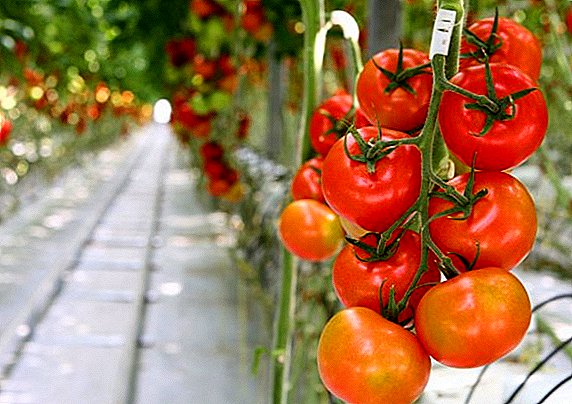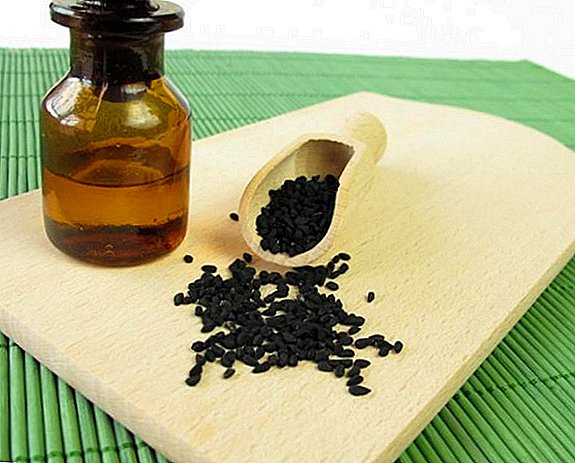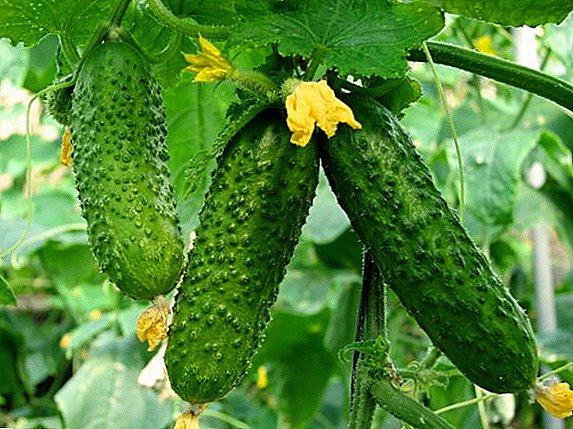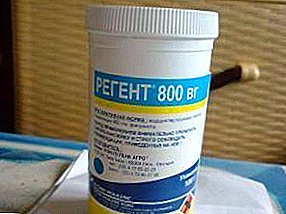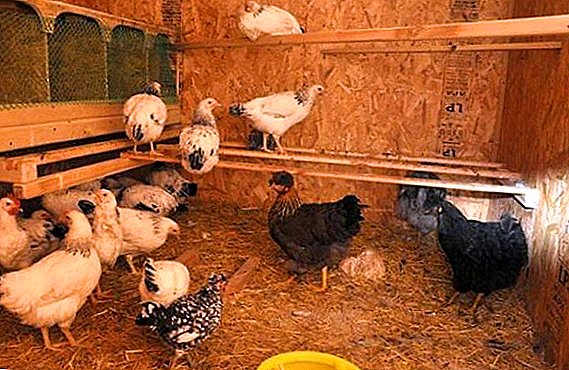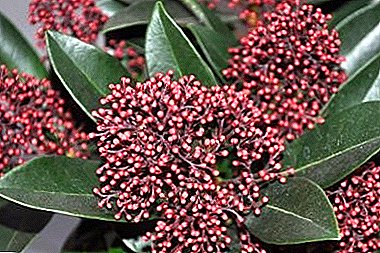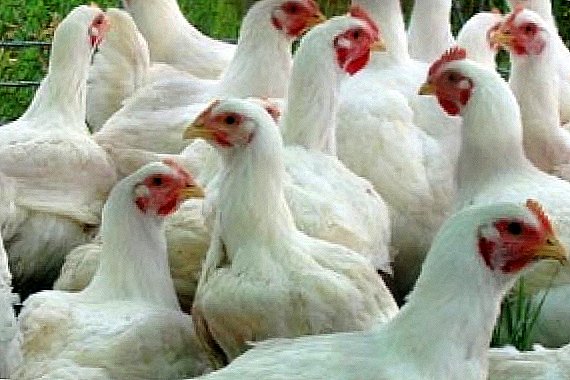
Hens are the most frequently encountered animals in the households of the countries of the former Soviet Union.
To keep them very simple, and as a result you can get a lot of fresh eggs, and after - dietary meat, which does not have a single gram of antibiotics.
Today, broiler chickens are very popular, which are gaining more weight than regular laying hens or roosters.
Broiler chickens differ in size from ordinary ones: broiler young are larger than normal, and these hybrid chickens grow faster with an increased rate of weight gain.
But there are some rules to follow when feeding these chickens.
Broiler chickens are known for their growth rates. Already at the age of 55 - 56 days, they can weigh 1.4 - 1.6 kg.
Often, those who have lived no more than 80 days are sent for slaughter, because after overcoming this turn, the growth rate of birds slows down significantly.

But first we can say a few words about the general conditions of housing, which have no less degree of influence on growth than the nutrition of chickens.
In the chicken coop, where broiler chickens are kept, there should be little light but warm enough.
You need to remember that the smaller the chickens, the more heat they need. Therefore, if the indoor temperature is below 25 ̊C, then you need to install additional devices for heating the birds.
Broiler bed must be hard. As the material becomes contaminated, it must be changed. The recommended density of chickens is 10-15 birds per 1 sq. M. floor.
If the room is equipped with a good ventilation system, then the density can be increased to 14-18 heads per square meter.
Broiler chickens are most actively gaining weight in the first month of their lives. Therefore, feed during this period should be as balanced as possible.
During the first days of life, broilers can be fed in the same way as regular non-dry chickens. The diet should include finely chopped boiled eggs, oatmeal, cottage cheese, millet, and shredded wheat.
Crops of barley, wheat and oats of small chickens need to be served finely crushed and without films. At this stage, the percentage of grain from the total diet of poultry should be in the range of 60-65%.
Also interesting to read about the breed of broilers

When the chickens reach three days of age, so-called green food can be added to their diet. To do this, take fresh herbs, finely chop it and add to the above ingredients with the calculation of 6 g per chicken per day.
In the autumn-winter period, it is impossible to find fresh grass, so you should first prepare for this, namely, soak the barley grains until they germinate.
You can also add grass meal to the mash. This flour must be of very high quality. It should be given to five-day chickens with the expectation of 2-3 g, and then 5 g per head per day.
It is impossible to give more flour, as it contains an increased amount of fiber, which is not very well absorbed by the young chicken body.
Red carrot is a very important product for the fragile body of the chicken. It should be given from the age of 5 to 7 days in a finely grated form, adding 3 to 5 g per head to the total weight of the feed.
When chickens live 10 days after birth, they can be given fish waste. At first, the amount of 5–7 g per head will be optimal, and later it will be possible to give 10–15 g. At the same time, it is possible to give squirrels to birds in the form of meal. The percentage of protein should range from 15 to 17% of the total mass of dry feed.

Twenty-day-old chickens can be given less grain, and 15-20% of grain can be replaced by potatoes, which the broilers love.
Potatoes need to be cooked, knead well and add to wet food.
The most valuable protein foods that can be given to broiler chickens are yogurt, cottage cheese and whey.
For the birds to develop well, they need give vitamins. In particular, five-day broilers need to be given vitamins A and E, which will help strengthen the body.
To prepare trivitamin, which contains the necessary components, with your own hands, you need to purchase oil solutions of vitamins D2, A and E. These solutions should be mixed with regular vegetable oil in a ratio of 10 ml of each component to 500 ml of oil.
The resulting mixture should be thoroughly mixed and kept in the refrigerator so that the solution does not deteriorate.
This vitamin complex should be added to the feed 2 times a week, 1 teaspoon per 1 kg of feed.
Vitamin D2 can be replaced by vitamin D3, which is also called cholecalciferol. But it must be remembered that cholecalciferol is 25-30 times more active than vitamin D2. Therefore, you need to carefully calculate proportionotherwise you may inadvertently poison the birds.
In order to prevent this, 30 drops of vegetable oil should fall to 1 drop of this compound. In this form, the amount of vitamin D2 needed can be replaced with the same amount of solution.

A very important role in the development of broiler chickens is played by mineral feed of various species. You can give it to five-day chickens. Chalk, shell and cat flour are perfect as these mineral feeds.
Each component must be well crushed and given to chickens with feed. On 1 head should be 2-3 grams of these components per day.
From the first days of the little chickens in the diet fine gravel must be present. The calculation is as follows: 200-500 g of gravel should be allocated to 10 heads each week.
Broiler chicks should not be given sand.
As a preventive measure against stomach diseases, birds should be given a solution of cherry-colored manganese 3 to 4 times a week. The solution must be prepared immediately before you are going to drink it to the chickens.
With regard to the frequency of feeding, the smaller the age of chickens, the more often they need to be fed. During the first week the number of meals should be up to 8, since the chickens' ventricles are small, and they need a lot of energy.
When the birds will live the second week, they need to be fed 6 times a day, the third - 4 times. When the chicks reach the age of one month, the food should be two meals. If you give the birds wet food, then they should eat it in about 30-40 minutes.

If you plan to send chickens for slaughter in 2 weeks, then they do not give gravel and medicine.
If chickens hatch specially for meat, then they should be fed with dry or semi-moist highly nutritious foods. Broilers should gain 500 - 700 g of weight per month, provided that they are properly fed and kept in proper conditions.
When the age of broiler chickens passes for a month, then the second period of their rearing begins. At this time, the birds are not particularly demanding on feed.
In the diet should be a lot of greens or grass meal. An indicator of the correctness of fattening will be the weight of the chicks. At 2-2.5 months of age, each bird will need to gain more than 2 kg.
Broilers be sure to give waterand it should be clean and fresh. It is advisable to heat it up a little each time. To monitor the presence of fluid need to constantly.
Water temperature should not exceed 30 ̊C, otherwise chickens simply will not drink it. It is advisable to make additional lighting around the trough and the feeders so that they are clearly visible to the chickens.
It is advisable to wash containers for food and water daily, and once every 5 to 6 days they should be disinfected with a formalin solution with a concentration of 5%.
Growing broiler chickens is worth all the effort, because as a result you get fresh dietary meat that will not only be tasty, but also useful.


